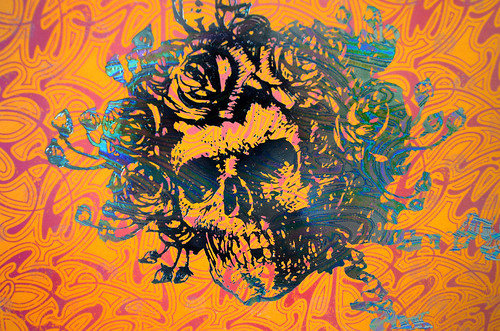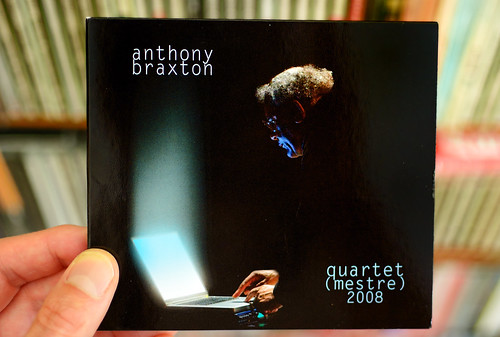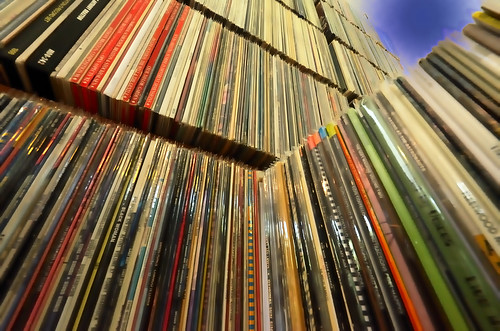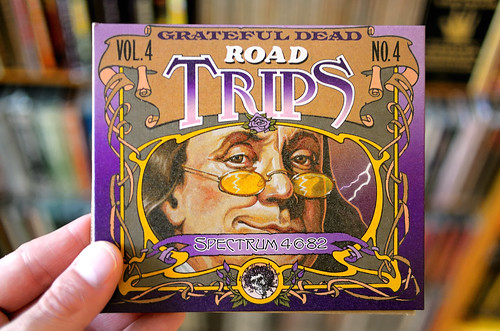
* Monteverdi: Vespro Della Beata Vergine 1610 (La Capella Reial/Savall) (Alia Vox 2SACD)
* Cage: Atlas Eclipticalis & Winter Music/103 (S.E.M. Ensemble/Kotik/Tudor) (d.1-2) (Asphodel 4CD)
* Vasks: Māte Saule (BIS CD)
* Lang: Little Match Girl Passion (Hillier Ensemble) (Harmonia Mundi SACD)
* John Coltrane: Interplay (d.4-5) (Prestige/Concord 5CD)
* John Coltrane: Side Steps (d.1-4) (Prestige 5CD)
* John Coltrane: Live Trane: The European Tours (d.1) (Pablo 7CD)
* Sun Ra: Municipal Auditorium, Santa Monica, CA 12-11-74 (AUD 2CDR)
* Sun Ra: Smiling Dog Saloon, Cleveland, OH 1-30-75 (FM CDR)
* Weather Report: 8:30 (Columbia/CBS—Japan 2LP)
* Stanley Clarke: School Days (Epic/Friday Music LP)
* Pat Metheny Group: The Falcon And The Snowman (Soundtrack) (EMI/Capitol CD)
* Pat Metheny Group: We Live Here (Geffen CD)†/‡
* Pat Metheny Group: “Quartet” (Geffen CD)
* Pat Metheny Group: Imaginary Day (Warner Bros. DVD-A)
* Pat Metheny Group: Speaking Of Now (Warner Bros. CD)‡
* Pat Metheny Group: The Way Up (Nonesuch CD)
* Marc Johnson: The Sound Of Summer Running (Verve CD)†/‡
* Lucinda Williams: Essence (Lost Highway CD)†/‡
* Lucinda Williams: World Without Tears (Lost Highway CD)†/‡
* Grateful Dead: The Grateful Dead (Warner Bros./Rhino LP)
* Grateful Dead: Anthem Of The Sun (Warner Bros./Rhino LP)
* Grateful Dead: Aoxomoxoa (Warner Bros./Rhino LP)
* Grateful Dead: Workingman’s Dead (Warner Bros./Rhino LP)
* Grateful Dead: American Beauty (Warner Bros./Rhino LP)
* Grateful Dead: American Beauty (Warner Bros./Mobile Fidelity LP)
* Grateful Dead: Municipal Auditorium, Austin, TX 11-22-72 (d.2-3) (SBD 3CDR)
* Grateful Dead: Blues For Allah (GD/Audio Fidelity LP)
* The 13th Floor Elevators: Bull Of The Woods (International Artists/Charly CD)
* Santana: Moonflower (Columbia 2LP)
* Sonic Youth: Dirty (Deluxe Edition) (DGC/Goofin’ 4LP)
* Yo La Tengo: Popular Songs (Matador CD)†/‡
* Robert Pollard: Lord Of The Birdcage (GBV, Inc. LP)
* Boston Spaceships: Let It Beard (GBV, Inc. 2LP)
†=iPod
‡=car
Commentary:
Last week, an anonymous commenter wrote:
i am always blown away by how much GD you listen to. i am a deadhead from way back, and i don’t listen to that much GD. :-)
Heh. What can I say?
When Jerry Garcia died on August 9, 1995, I took it really hard. I had just received second row tickets to see the Grateful Dead at Boston Garden in September. The Dead were a way of life: I had a job and wife (who was (and continues to be) very understanding) but I would go to shows as often as possible, a dozen or so every year: Spring Tour, Summer Tour, six shows at The Gahden. As the saying goes, “there is nothing like a Grateful Dead concert” and it’s true. If you never saw them, you have no idea what you missed. I liked listening to their records and bootleg tapes, but they were pale facsimile of the real thing: Live Dead. With Garcia gone, it all came crashing to an end. I couldn’t listen to them for a long, long time; it just made me too sad.
Well, time heals all wounds, as they say, and I eventually realized I still loved the music very much. And while the GD were no more, a flood of vault releases ensued: 36 volumes of Dick’s Picks, various compilations, box sets and DVDs. With the turn of the century, broadband internet access made possible the sharing of lossless FLAC files first via FTP and then via BitTorrent, making available almost every note the band ever played to anyone with a cable modem.I probably have well over a thousand CDRs of live GD music and the collection continues to grow—and I buy every new release. Believe it or not, each show really was different and while not every note is perfect (good lord, no), there are almost always a few precious gems and unique moments of pure inspiration. Instead of making me sad, listening to the Dead now makes me happy. It’s comforting and familiar yet endlessly interesting. It’s the perfect music for a Saturday morning.
But I hardly ever listen to their studio albums. So last fall, when Rhino announced The Warner Bros. Studio Albums box set, I was nonplussed. I had multiple copies of all these records on both vinyl and CD and didn’t see the point. Yet when I would see it at Grimey’s and pick it up—it’s heavy!—and gently fondle it, I had second thoughts. Man, the trippy, foil-stamped slipcase is just too cool! Despite my reservations about its contents, I wanted it, bad. After my root canal ordeal, I decided to treat myself and bring it home. It is truly a thing of beauty: inside the heavy-duty slipcase, each album is meticulously reproduced down to the finest detail, from the tipped-on jackets to the olive green labels. Mastered by Chris Bellman from the original analog tapes and pressed on 180-gram virgin vinyl at RTI, these things sound really, really good—even on my modest system.
It had been a while (years!) since I listened to these early records and it was something of a revelation. It’s actually quite amazing to hear this band of misfits transform themselves from greasy, psychedelic ravers into (almost) slick new-country avatars in a mere three years (1967-1970). Even if imperfect, these are certainly the best studio albums the GD ever made. The bucolic American Beauty (1970) particularly benefits from the deluxe treatment and this already wonderful-sounding album sounds better than ever, easily besting my old MoFi copy, which sounds thin and shrill by comparison.
What really makes this set worthwhile for the fanatical record collector is the presence of the original mixes of Anthem Of The Sun (1968) and Aoxomoxoa (1969). Anthem is a dark, lysergic masterpiece (“we mixed it for the hallucinations” quipped Garcia at the time) but the original version of Aoxomoxoa is much less successful. Frankly, I prefer the re-mix although it’s nice to have this as a reference. As you might expect, the weirder tracks, like “Rosemary” and “What’s Become Of The Baby” sound completely different from the 1972 remix which, remarkably enough, makes them sound even weirder. Nonetheless, this deluxe box set is just about perfect.
So, yeah, I listen to a lot of GD. But as you can see from the list above, that’s not all I listen to (I have other obsessions—and guilty pleasures). The Dead were a big part of my life and I’m grateful to have such unprecedented access to their vast recorded legacy. As it expands, it continues to reward in-depth study and, more importantly, listening to their music makes me happy. So, you know, I’m not going to feel bad about it. In fact, I’m contemplating doing a chronological survey of their discography a la Sun Ra Sunday. I know I’ve threatened this before but let’s see if I can get it together in 2012.






